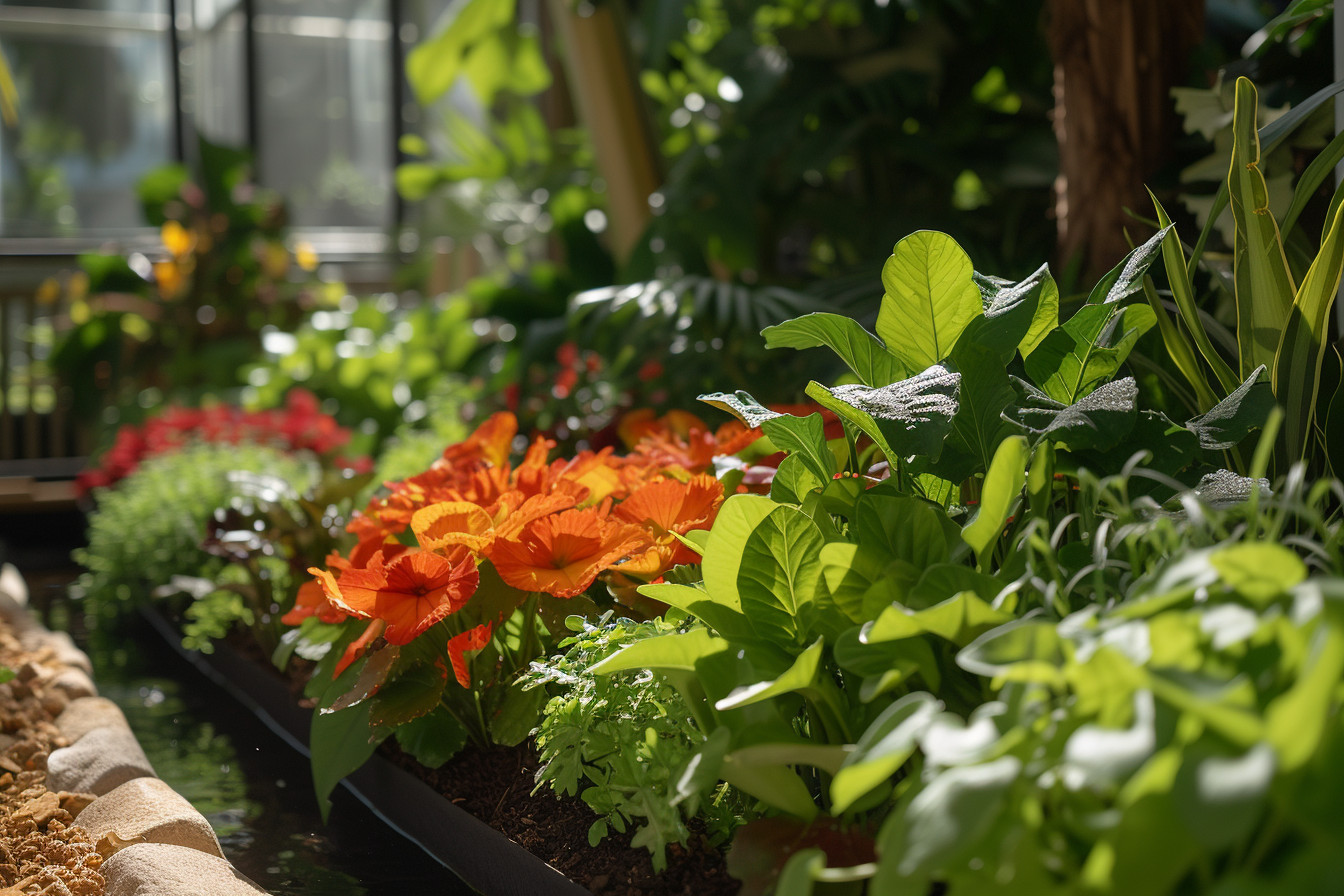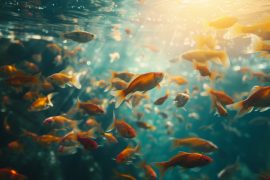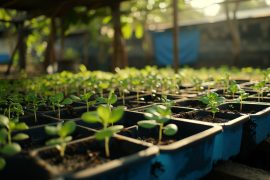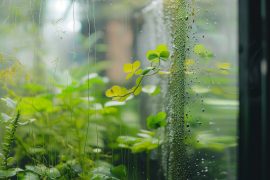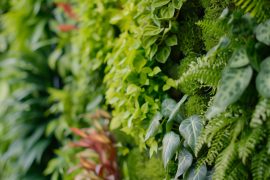I’ve always been fascinated by the blend of technology and traditional gardening; it’s like watching two worlds collide in harmony. That’s where aquaponics comes into play, striking a fantastic balance between fish farming and soilless plant cultivation. It’s not just about growing food; it’s an art form that connects me to nature on a profoundly serene level, offering peace amidst our chaotic lives.
Starting my journey with aquaponic systems for home use, I discovered myriad designs, each uniquely suited to different spaces and preferences. Some folks lean towards minimalist setups that fit snugly in their urban apartments, while others go all out creating expansive backyard ecosystems alive with variety—a testament to human creativity when we’re deeply connected with mother nature.
This is more than garden work; it’s embracing life at its core through nurturing plants and aquatic animals together as they thrive off one another—truly magical, if you ask me!
Alongside enjoying fresh veggies right from my living room or balcony garden on a daily basis, capturing this essence wasn’t easy but absolutely worth every effort considering how much healthier these greens are compared to store-bought ones.
Initially overwhelmed, looking at various configurations got easier to grasp once I dove deeper, only proving anyone armed with passion can build their sustainable oasis no matter the size of the space available.
Benefits of Aquaponic Systems for Home Use
Ever thought about diving into aquaponics at home? Let me break it down. This method is kind of a game-changer, blending fish farming with soilless plant cultivation—yep, you’re basically getting the best of both worlds here. But why go for an aquaponic system in your own space?
First off, we’ve got to talk about sustainability—a big buzzword these days, and for good reason! With an aquaponic setup right on your back porch or even inside (with proper lighting), you’re looking at dramatically less water usage compared to traditional gardening methods.
Believe it or not, cycling properly through fish waste and onto nourishing plants before returning clean to the aquatic buddies below is uber-efficient.
Then there’s this notion that growing our food needs vast outdoor spaces—not so fast! Urban dwellers are turning rooftops into green oases thanks to compact vertical designs, among other perks. shades, like lower grocery bills.
Factors to Consider Before Building an Aquaponic System
Diving into the world of aquaponics is like stepping onto a path less traveled. Yet, it’s one where you can harvest both fish and plants in your own living space! Now, if that isn’t cool, I don’t know what is. But before you jump headfirst into building your very own ecosystem at home, there are some critical factors worth considering.
Space Availability: First things first, how much room do you have? The size of your system will directly depend on this. If you’re working with just a cozy corner in an apartment balcony or backroom, fret not; smaller systems tailored for limited spaces exist too!
On the flip side, having a good ‘ol spacious backyard opens up possibilities for larger setups capable of supporting more plant varieties and larger fish populations.
Types of Plants and Fish to Raise: Not all inhabitants play nice together—some are divas requiring particular pH levels, while others might be laid-back swimmers content in diverse environments.
- Plant Choices: Leafy greens such as lettuce love aquaponic life, whereas root veggies might pose challenges without advanced customization.
- Fish Options: Tilapia’s often hailed as a hardy choice suitable for beginners, but exploring local species adapted to your climate could yield exciting gardening tales!
Consider these pairings carefully because they’ll become roommates, sharing nutrients among themselves within their water-based abode.
Water quality management is key. This isn’t it and forget it’ folks; keeping tabs on nutrient concentrations along with ammonia and nitrite levels holds pivotal importance for ensuring healthy growth cycles and preventing any tragic underwater dystopias from unfolding under our watchful eyes!
| Parameter | Ideal Range |
|---|---|
| pH | 6.5–7 |
| Ammonia max. | 1 mg/L (PPM) |
Harnessing balance means regular monitoring. tweaking inputs accordingly, rest easy knowing intricate sensors Controllers make supervision easier nowadays than ever before, yet they still need human discernment to oversee operations.
After all, machine intelligence has ways to perfectly mimic a nuanced gardener’s touch, don’t you think?
Deciding to build a daunting venture, armed knowledge, proper planning, and a peaceful, harmonious garden await those willing to take steps forward. Connected mindfulness in nature provides encounters.
Designing an Aquaponic System to Fit Your Space
When I first dipped my toes into the world of home aquaponics, the journey felt like stepping inside a labyrinth. There were all these considerations about space, design types, and what plants or fish would thrive best in such systems. Yet amidst this complexity lies beauty—the chance to create life-giving ecosystems right in your very own living area.
For starters, let’s talk about designs that can snugly fit into any household setting without causing much disruption:
- Vertical towers: Picture lush greenery cascading down from top to bottom; vertical towers are perfect if you’re tight on horizontal spaces but have plenty of room upwards.
- Media beds positioned alongside sunny windowsills enable nutrient-rich water flow while hosting an array of vegetable crops.
Now imagining transforming confined areas within homes—such as unused corners or side yards—into productive nooks is truly enchanting, isn’t it? These systems don’t just occupy physical realms; they also fill ambient spaces with tranquility reminiscent of nature’s serene whispers.
Drawing inspiration from visits to model urban farms where every inch was efficiently utilized left me awestruck. Think bathtubs reimagined as thriving hubs for floating raft cultures! Or compact yet prolific barrel ponics making use of small patio ends—it’s incredible how adaptable these setups can be when thoughtfully designed!
Choosing the Right Fish and Plants for Your Aquaponic System
Diving into aquaponics is like embarking on a thrilling journey where you pair fish with plants in a symbiotic relationship that’s nothing short of fascinating. Imagine combining aquarium keeping with gardening; it’s peaceful yet vibrant, technical but approachable.
When picking out your aquatic buddies, tilapia often tops the list. These fellows are hardy—think of them as the Spartans of aquaponic systems; they tolerate varying water conditions, making them perfect for beginners or those who prefer their gardening to come without a side dish of constant worry. Another great option is goldfish—not just pretty faces!
They’re waste production machines, which translate to more nutrients (read plant food) per swimmy friend.
But here’s where things get intriguing when we add our green-thumbed pursuits into the mix—choosing complimentary vegetation:
- Leafy greens: Lettuce and kale rejoice in these watery abodes, finding themselves at home amidst gentle waves.
- Herbs: Basil? Mint? Yep—they thrive alongside their finned companions, turning your system into an aromatic haven while purifying the waters!
Creative Aquaponic System Designs to Inspire Your Projects
Diving into the world of aquaponics, it’s fascinating how this ancient method—synergizing plants and aquatic animals in a harmonious ecosystem—has evolved. Today I’m thrilled to share some inventive designs that are not just about growing food; they’re transforming homes into ecosystems.
- The Vertical Tower: Picture your living space with lush green towers brimming with herbs and leafy greens. These aren’t mere fantasies but real, accessible setups perfect for small apartments or houses craving fresh oxygen without sacrificing floor area.
- By vertically stacking grow beds above an aquarium powered by a simple pump system, all circulating nutrients from fish waste back to the plants, the design screams efficiency and beauty.
- Mason Jar Magic: Sometimes creativity shines brightest when we go minimal! The mason jar setup is stunningly straightforward yet surprisingly effective.
- Kitchens across the country have adopted these tiny eco-capsules lining windowsills where basil, mint, and microgreens thrive in water cycled through decorative betta fish bowls beneath them—a splendid mix of form meets function in its simplest sense!
Let’s reminisce over one particular garden enthusiast who turned their modest backyard shed into an awe-inspiring indoor-outdoor aquaponics haven you might’ve mistaken for Eden itself on first glance!
They merged classic techniques inspired by historical Far Eastern farms reimagined within contemporary frameworks—an educational journey bridging past traditions towards sustainable futures right behind our very doors.
Final Thought
Diving into the world of aquaponics has been an incredible journey. I’ve explored a variety of creative system designs that are not only functional but can also be beautiful additions to any home space. Whether you have a sprawling backyard or just a tiny apartment balcony, there’s an aquaponic solution out there for everyone.
Through this exploration, it’s clear how accessible and sustainable these systems can be—a testament to human ingenuity in harmonizing with nature rather than working against it. The blend of fish farming with soilless plant cultivation creates a miniature ecosystem right at our fingertips. It’s fascinating!
Here’s what stood out:
- Sustainability: These setups require less water than traditional gardening.
- Efficiency: They often yield produce faster too!
I was especially impressed by the creativity some gardeners showed in integrating these systems into their homes aesthetically—turning them from mere food production units into living art pieces.
